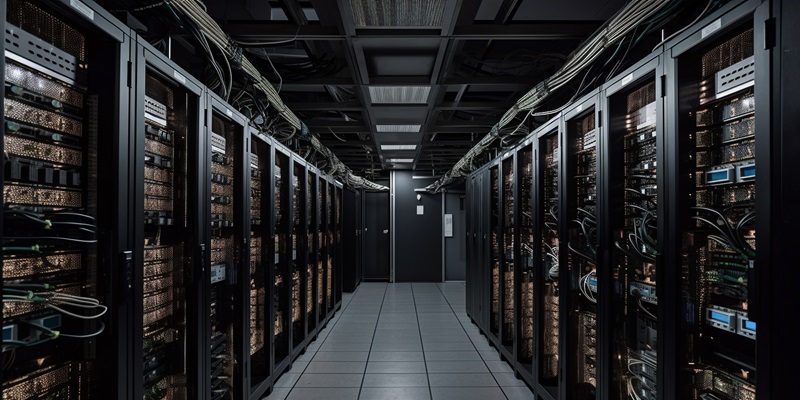The completion of a groundbreaking 3D-printed building in Heidelberg, Germany, marks a major milestone in construction technology. Known as Baufeld 5 and situated at Billie-Holiday-Strasse 7 in Baden-Württemberg, this single-story building boasts just under 600 sqm (6,600 sq ft) and has become the largest 3D-printed structure in Europe. Aside from its size, it has also gained distinction as being the first 3D-printed industrial building globally and, remarkably, the world’s first 3D-printed data center.
Baufeld 5: Europe’s Largest 3D-Printed Structure
Situated in the heart of Heidelberg, Baufeld 5 captures attention with its impressive size and technological innovation. This single-story building spans approximately 600 sqm (6,600 sq ft), standing as a testament to the possibilities of 3D-printed construction. The prime location on Billie-Holiday-Strasse 7 further enhances its prominence, making it a symbol of architectural progress in Germany.
A Milestone in 3D Printing: First Industrial Building
The completion of Baufeld 5 is a significant achievement for the 3D printing industry. Not only is it Europe’s largest 3D-printed structure, but it also holds the title of being the first-ever 3D-printed industrial building globally. This breakthrough signifies a new era in construction, as 3D printing technology continues to push boundaries and redefine traditional building practices.
Revolutionary 3D-Printed Data Center
Within the walls of Baufeld 5 lies a revolutionary data center set to transform the landscape of digital infrastructure. This state-of-the-art facility offers a capacity of 500 kW, providing a robust platform to support an array of computing needs. With the ability to accommodate approximately 100 racks, this data center is poised to handle the demands of the digital age while embracing the cutting-edge technology that brought it into existence.
Sustainable Construction: The Printing Process and Materials
The construction of Baufeld 5 and its data center represents a commitment to sustainable practices. Over 450 tons of printed concrete sourced from Heidelberg Materials were used in the printing process. Notable for its environmental friendliness, this concrete is 100 percent recyclable and contains a binder that achieves an impressive 55 percent reduction in CO2 emissions compared to pure Portland cement. Through this innovative use of materials, Baufeld 5 demonstrates a responsible approach to construction while showcasing the possibilities of sustainable architecture.
Collaborative partnerships
The realization of Baufeld 5 and its data center is the result of a collaborative effort between several industry leaders. Peri 3D, a division of the scaffolding firm Peri Group, played a significant role in the project. Their expertise in 3D printing technology and construction processes was invaluable in bringing the vision to life. Architecture firms Mense-Korte and SSV also contributed their design and planning expertise, ensuring the final structure meets all functional and aesthetic requirements.
The Technology Behind the Construction
Cobod, a notable player in the construction industry, takes center stage in the development of Baufeld 5. As the manufacturer of the BOD2 construction printers, Cobod has harnessed the power of 3D printing technology to make large-scale construction projects more efficient and cost-effective. Privately owned by General Electric, with CEMEX, Holcim, and Peri as key shareholders, Cobod leverages its expertise to push the boundaries of what is possible in construction.
Impressive Printing Milestones
The construction process of Baufeld 5 took approximately 140 hours to complete. This remarkable feat is equivalent to printing an impressive four square meters of the building per hour. The speed and efficiency of 3D printing technology showcased in this project highlights its potential for revolutionizing the construction industry, providing faster and more cost-effective building solutions.
Future coverage
The completion of Baufeld 5 and its pioneering data center is a story that demands further exploration. In issue 52 of DCD>Magazine, readers will have the opportunity to delve deeper into the collaboration, technology, and sustainability behind this ambitious project. The in-depth coverage will shed light on the significance of this achievement and offer insights into the future of 3D-printed construction and data centers. Stay tuned for this enlightening feature.
The completion of Baufeld 5 in Heidelberg, Germany, marks a significant achievement in the realm of 3D-printed construction. Its status as Europe’s largest 3D-printed structure, the first-ever 3D-printed industrial building globally, and the world’s first 3D-printed data center showcases the far-reaching potential of this groundbreaking technology. With its sustainable construction practices, collaborative partnerships, and impressive printing milestones, Baufeld 5 stands as a symbol of innovation and progress in the construction industry. The future of architecture and digital infrastructure has arrived, and Baufeld 5 is leading the way into a new era of possibilities.

